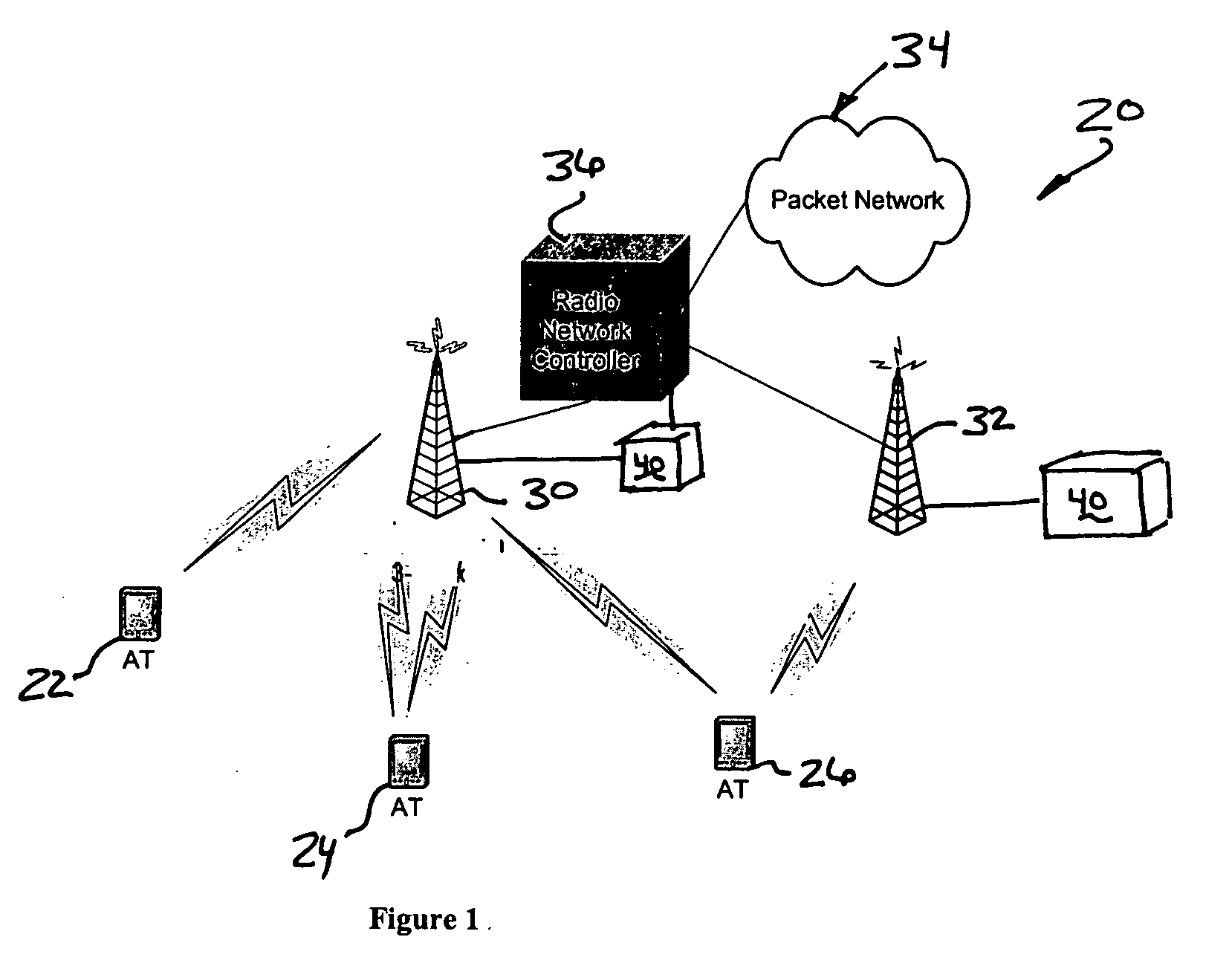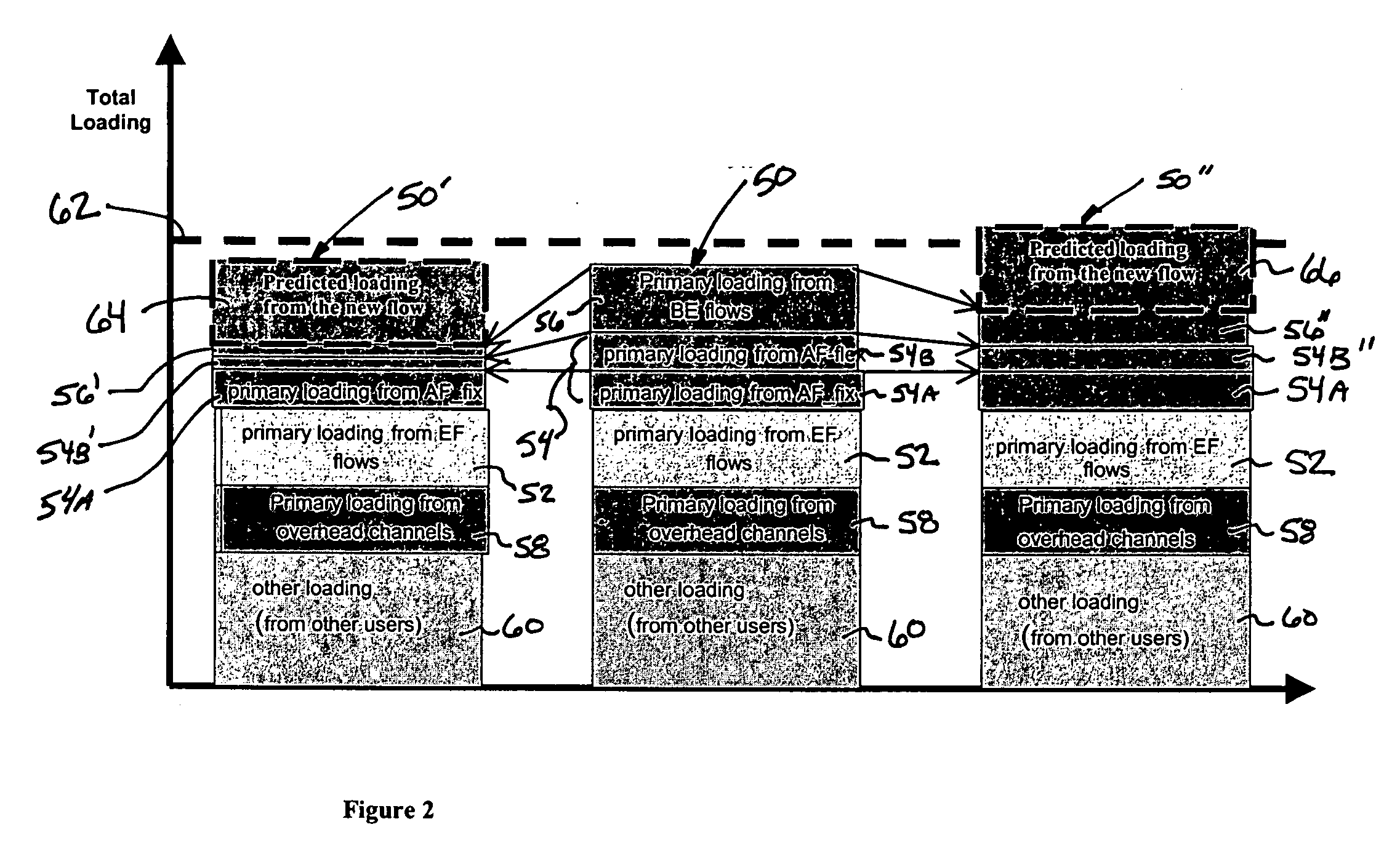Flow-based call admission control for wireless communication systems
- Summary
- Abstract
- Description
- Claims
- Application Information
AI Technical Summary
Benefits of technology
Problems solved by technology
Method used
Image
Examples
Embodiment Construction
[0023] The disclosed exemplary embodiment provides the ability to determine whether to admit a new call based on a flow of the new call. In this example, a current load of a sector is determined based on the contribution to the load from various flows of various priority levels. At least the primary flow of the new call provides an indication of what contribution the new call will make to the load if the new call were admitted. As described below, the new call may be admitted under various circumstances depending, at least in part, on the flow of the new call.
[0024]FIG. 1 schematically shows selected portions of a wireless communication system 20. A plurality of mobile stations (e.g. cell phones) 22, 24 and 26 operate in a known manner to communicate with one or more base stations 30 and 32. A wireless network 34 includes a radio network controller (RNC) 36 and operates in a known manner to facilitate communications between the mobile stations 22, 24 and 26 and another device such ...
PUM
 Login to View More
Login to View More Abstract
Description
Claims
Application Information
 Login to View More
Login to View More - R&D
- Intellectual Property
- Life Sciences
- Materials
- Tech Scout
- Unparalleled Data Quality
- Higher Quality Content
- 60% Fewer Hallucinations
Browse by: Latest US Patents, China's latest patents, Technical Efficacy Thesaurus, Application Domain, Technology Topic, Popular Technical Reports.
© 2025 PatSnap. All rights reserved.Legal|Privacy policy|Modern Slavery Act Transparency Statement|Sitemap|About US| Contact US: help@patsnap.com



